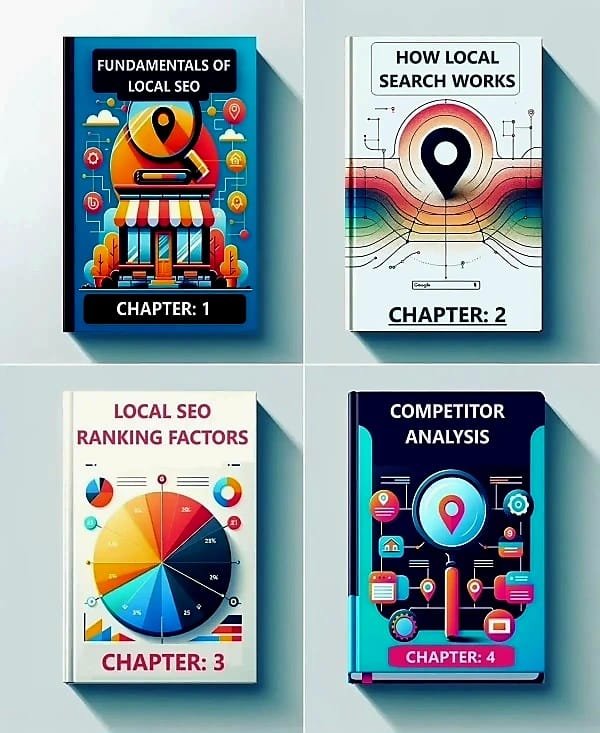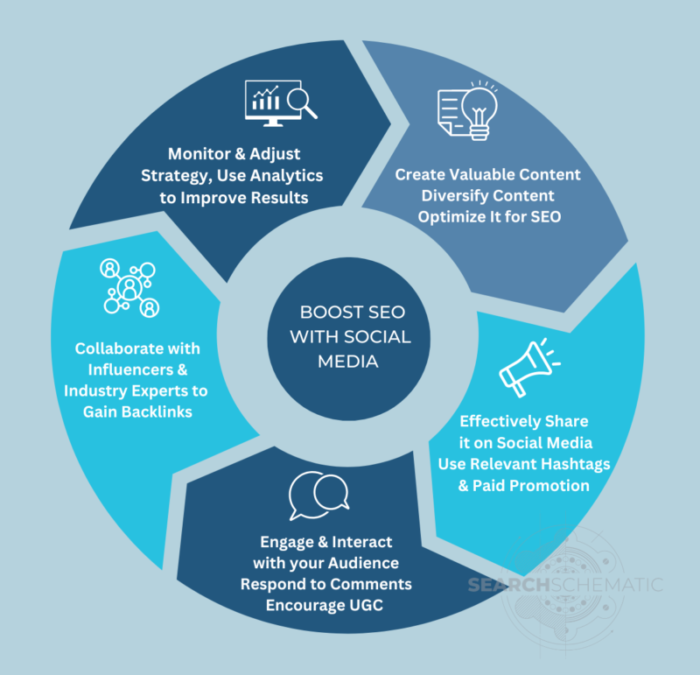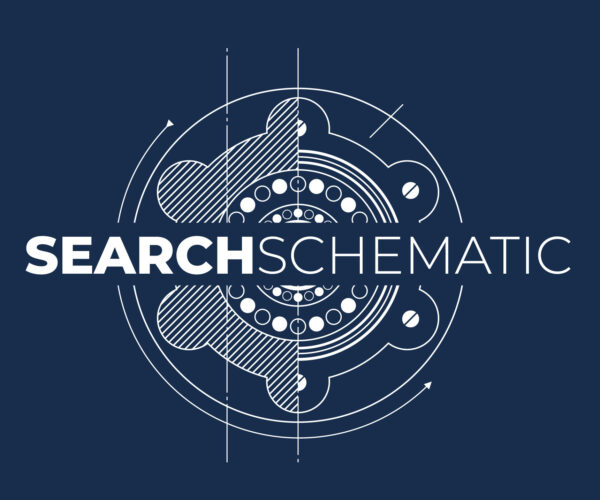
On-page SEO is a crucial aspect of optimizing your website for search engines and your users. It involves optimizing your web page’s content, design, and source code to increase rankings and earn more relevant traffic in search engines. Effective on-page SEO ensures that your website is accessible and understandable to both search engines and human users.
Why does On-Page SEO Matter?

Gone are the days when certain SEO experts could use tricks to push low-quality content to the top of search results. Thanks to technological advancements, Google’s algorithms have become smarter than ever. The majority of internet users trust Google due to its consistent delivery of quality results. By emphasizing user experience and producing high-quality content that aligns with search queries, Google ensures these pages rank higher in search results. This is why applying the best on-page SEO techniques is crucial—it aligns with Google’s emphasis on delivering value. This guide, tailored for business owners and others, outlines these techniques to enhance both rankings and engagement.
While on-page SEO lays the foundation for your site’s visibility in search engines, it’s just one piece of the puzzle. Both off-page and technical SEO play critical roles in ensuring your website’s overall search performance.
Understanding How Google Search Works

Before diving into On-page SEO factors and how to optimize them, it’s valuable to understand how Google Search operates. At its core, Google’s primary aim is to present the most relevant information to its users based on their search queries.
Google’s algorithms sift through billions of pages, determining which ones are most likely to answer the user’s query. The search engine doesn’t merely match keywords. It examines the entirety of the content, its context, and its relevance to the query. This is why a page talking about ‘apple,’ the fruit, can be differentiated from ‘Apple,’ the tech company, even if the search term is the same.
Why Relevance Is Crucial in SEO
Relevance is a golden word in the world of SEO. Even if a site is beautifully designed and packed with keywords, it won’t rank favorably if it isn’t aligned with the user’s intent or fails to satisfy their search needs. This underscores the importance of crafting content that genuinely meets users’ expectations.
Now That We’re Google Search-Knowledgeable: Dive Into On-Page SEO Factors!
Having an understanding of how Google Search operates, we can delve into the On-page SEO factors essential for optimization. Below is the checklist for On-page SEO factors that this guide will explore.
Our SEO agency, Search Schematic, has achieved tremendous results for our clients by optimizing these elements:

The Role of Keyword Research in Content Creation
Keyword research isn’t just about finding words to sprinkle into your content. It’s a strategic endeavor to understand the language of your audience. Tools like Google’s Keyword Planner, KWFinder, or Ahrefs allow you to get into the mindset of searchers, revealing popular terms they use and, more importantly, their intent.
For instance, if you sell cupcakes, instead of focusing solely on the generic keyword ‘cupcakes,’ you might realize that ‘Red Velvet Cupcakes’ and ‘Chocolate Cupcakes’ are also highly searched keywords. This insight allows you to tailor your content to these specific demands, boosting relevance, attracting more visitors, and enhancing engagement.
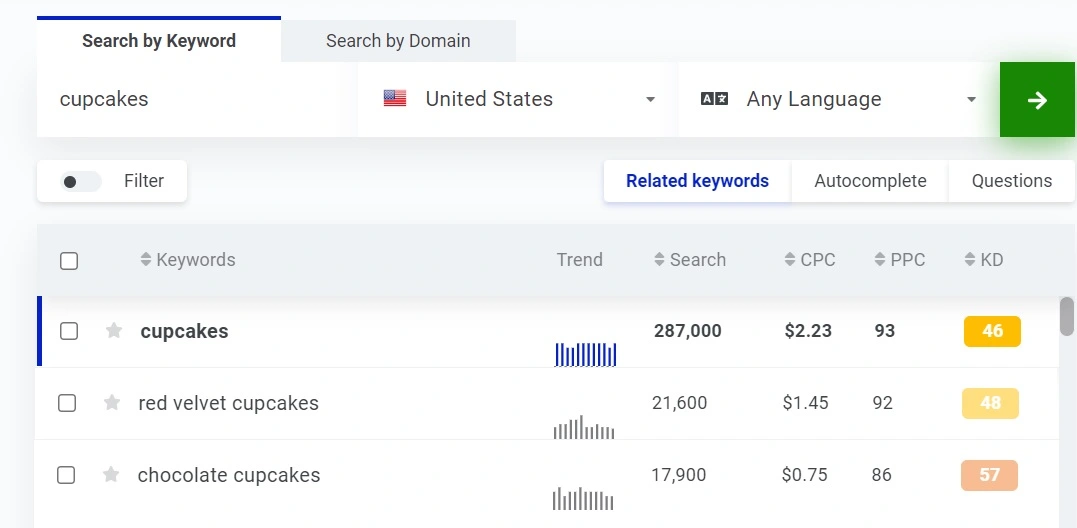
Crafting High-Quality Content is the Essence of On-Page SEO
We have learned that Google is all about providing value to its users, which is how it has kept such a vast market share. It’s an excellent example for any business to learn from and follow the same path to success.
Your content is what online users interact with. If it answers their questions, informs them, and satisfies their needs, it will be considered valuable content not just for your users but also for search engine ranking algorithms.
Guidelines for Crafting SEO-Optimized Content: E-E-A-T
Google underscores the significance of content quality. Creating content is not merely about populating pages with keywords but about genuinely serving the reader. According to Google’s updated Search Quality Rater Guidelines, content should adhere to the E-E-A-T principles:
Prioritizing these components is essential. Focus on crafting content rooted in experience, bolstered by expertise, that exudes authority and trustworthiness. By aligning with these principles, your content stands a better chance of achieving higher rankings in Google.
Optimizing URL Slugs
A URL slug is the editable segment at the end of a web page’s URL. Properly optimizing it is crucial for on-page SEO. A well-crafted slug reinforces the content’s relevance, aiding search engines in accurately matching it with search queries. Additionally, it improves the user experience by providing clarity about the page’s content.
For instance, our digital marketing company, Search Schematic, has the domain “searchschematic.com.” For our page on “Search Engine Optimization SEO,” our descriptive slug is: searchschematic.com/search-engine-optimization-seo.

Meta Title & Meta Description: Their Importance in SEO
When you type something into a search engine, the clickable website titles and short descriptions you see in the results are meta titles and meta descriptions. They’re HTML elements found in a website’s code in the header section. Optimizing them involves considering the following:
- Relevance: It’s crucial to align meta titles and descriptions with your page content, as relevance plays a key role in search engine algorithms.
- First Impressions: These snippets give users their initial taste of your site.
Including relevant keywords, while ensuring the title and description accurately and enticingly represent your content is crucial. Ideally, meta titles should be up to 55 characters, and meta descriptions should be around 155.
The Proper Use of H1 to H6 Heading HTML Elements

The H1 to H6 are HTML heading elements, with the heading H1 being the most important and H6 the least. Headings structure the content and make it easy for the reader to understand and navigate. Humans can easily spot the hierarchy of the heading by reading the large bold title and then less bold subheadings and so on.
However, the On-Page SEO purpose is to cater to both the readers and the search engines for improved rankings and usability.
Search engine algorithms, unlike humans, depend on HTML heading elements to interpret content. A title, for instance, uses the h1 element, while subheadings might be h2 or h3. These elements help search engines understand content in relation to user queries.
Improper use of these heading tags, especially for mere styling or within subpar content, can detrimentally affect a page’s ranking.
Engaging UX Design for SEO and User Satisfaction

So far, our discussion has largely centered around text-based content. However, the presentation and structure of this content are equally important. UX, or User Experience Design, plays an instrumental role in this.
Did you know? A Stanford study revealed that 75% of users judge a company’s credibility based on its website’s design alone.
Another study has shown that users prefer to scan websites rather than read every word. Therefore, it’s essential to structure your website in a manner that aligns with this behavior, ensuring both search engines and users find value.
Key Elements of Effective UX Design
Remember, the objective of good UX design, in the context of on-page SEO, is to ensure that users find value in your content and navigate your site effortlessly. The more seamless and engaging their experience, the longer they’ll stay, and the more positively search engines will view your page.
Optimizing Images for SEO & Accessibility
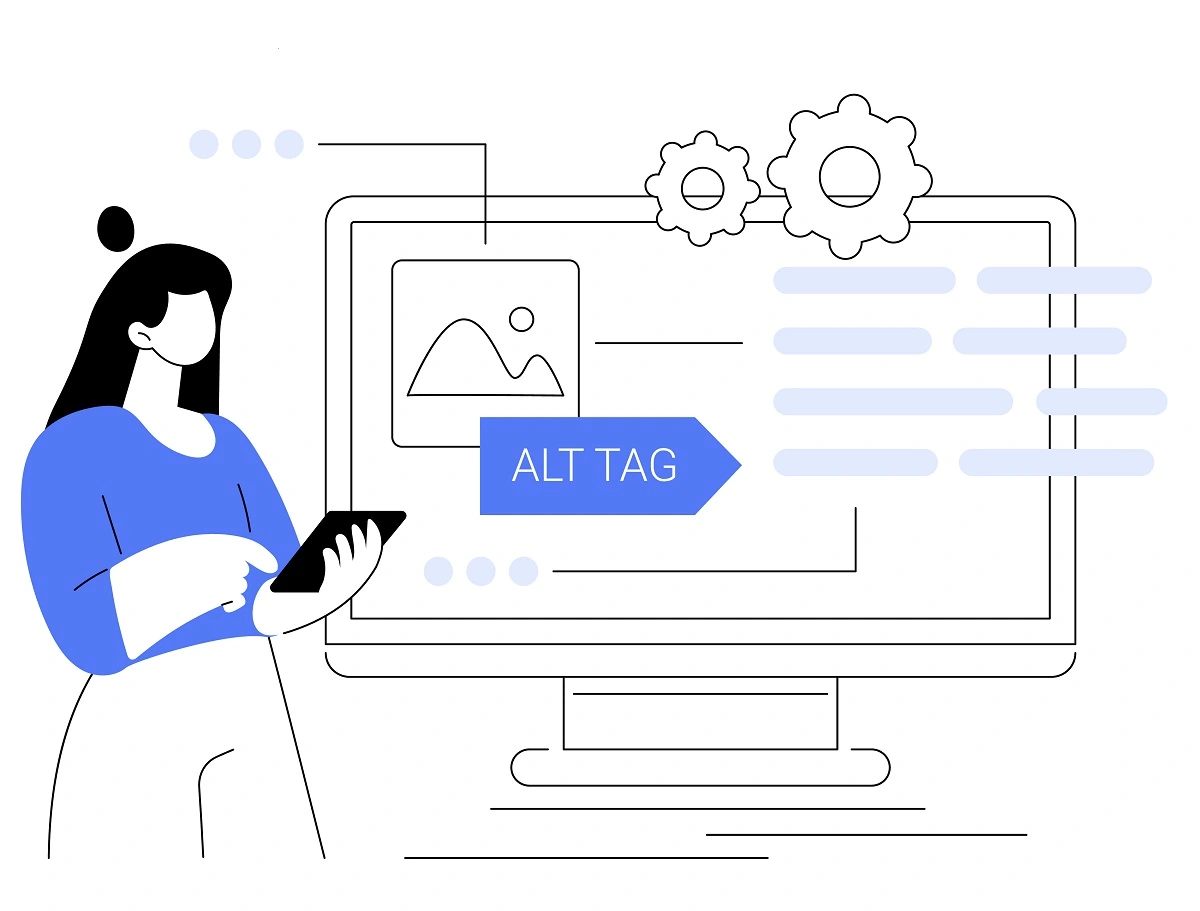
Earlier, we discussed the importance of adding images to your content for enhanced user engagement and expereince. Besides their visual appeal and improving content, they also play a crucial role in SEO and accessibility.
Here are the crucial steps and their significance in optimizing your web images for SEO and improved accessibility:
- Image Format: While .jpeg and .png have been favorites among web developers for their decent compression, the newer WebP format offers even superior compression, ensuring quality images at reduced sizes.
- Image Size: Aim for the smallest possible file size without compromising image quality. Tools like TinyPNG or Optimizilla can help compress images. Also, consider cropping or resizing images to their optimal dimensions before uploading. Reduced size aids in fast-loading web pages.
- Alt-Text: Primarily designed to enhance accessibility, alt-text describes images to users who can’t see them. This description not only aids people with disabilities, but search engines also use alt-text to understand and rank your content more effectively.
This optimization ensures your images are both user-friendly and search engine-friendly, making them an asset in your SEO strategy.
Internal Linking in On-Page SEO
Internal links are a pivotal aspect of on-page SEO. They connect different pages within your website, and their main objective is to enhance user experience while optimizing for search engines.
Benefits of Internal Linking:
Navigation & User Experience
Internal links act as pathways, guiding visitors to explore significant sections of your site. This helps users find the information they’re looking for, keeping them engaged and reducing bounce rates.
Distributing Authority Across Pages
One of the benefits of internal linking is the distribution of “link authority” from one page to another. In SEO terms, “link authority” or commonly called “link juice,” refers to the value or equity passed from one page or site to another. This distribution can help boost the rankings of various pages within your site, especially if they’re linked from high-authority pages.
Clarifying Content Structure for Search Engines
By using internal links, you give search engines a clearer picture of the structure of your site’s content. This helps them understand which pages are interconnected and their relative importance.
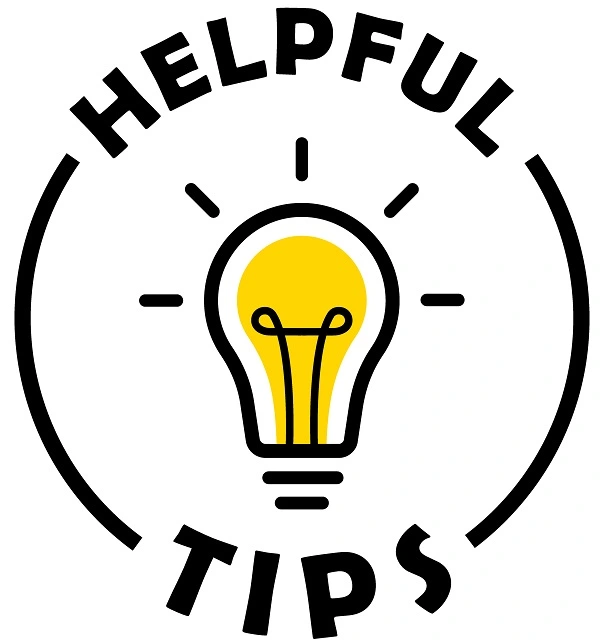
Quick Tips for Effective Internal Linking
- Link to pages that are truly relevant to the content you’re discussing.
- Use clear and descriptive anchor text for better clarity.
- Keep a balance; avoid adding too many links on a single page but ensure important pages are interconnected for optimal SEO.

Web Page Speed
Slow-loading pages are one of the primary reasons users leave a website. Speed has become a significant factor in user satisfaction and SEO:
- User Experience: Users typically expect a webpage to load in two seconds or less. Beyond that, bounce rates can increase significantly.
- SEO Ranking: Google has clarified that site speed is a ranking factor. Faster sites provide better user experiences, leading to higher rankings.
Regularly test your website’s speed using tools like Google PageSpeed Insights or GTmetrix. These platforms offer actionable insights to enhance your site’s speed, such as compressing images, leveraging browser caching, and minimizing server response times.
Mobile Friendliness
A recent study in 2023 shows that over 55% of web traffic comes from mobile users. A mobile-optimized website is not just an option but a necessity.
- Improved User Experience: Mobile-friendly designs ensure users don’t have to pinch, zoom, or scroll horizontally to view content.
- SEO Benefits: Google’s mobile-first indexing means that your site’s mobile version is primarily evaluated for ranking.
Test your website’s mobile-friendliness using Google’s Mobile-Friendly Test tool. If your site isn’t mobile-friendly yet, consider responsive web design, which allows your web page to adjust according to the device’s screen size.
Structured Data for Better Visibility
Structured data may seem like a techy term, but it’s a way to give search engines a clearer idea of your website content. Think of it as creating detailed labels for each piece of your content. And while it doesn’t directly boost rankings, the enhanced listings it provides can lead to higher click-through rates and lower bounce rates, indirectly benefiting your SEO.
Why should you care?
- Enhanced Listings: Using structured data can improve your website’s appearance on search engines. It allows things like images and reviews to be displayed directly in the search results.
- Higher Clicks: When your website listing looks more informative and appealing, it’s more likely that people will click on it.
- Future-Proofing: As voice searches on devices like smart speakers become more common, structured data helps your content to be found and understood more easily.

Search results screenshot with structured data elements—product image, ratings, reviews, and price—highlighted with red borders.
Many popular CMS platforms like WordPress, Joomla, Drupal, Wix, and Squarespace offer ways to integrate structured data easily. However, for platforms that don’t have this option, you will need technical expertise to add the schema markup manually. Regardless of the method, the visibility and user attraction benefits are substantial.
Your roadmap to dominating the SEO landscape.

Following the on-page SEO practices detailed in this guide will pave the way for a fortified SEO strategy. When complemented with sound technical and off-page SEO practices, you’re positioning your website for a surge in rankings. Stay dedicated, keep optimizing, and watch your digital presence thrive. Success in SEO is a journey, not a destination, and with commitment, you’ll achieve and maintain great results.



















